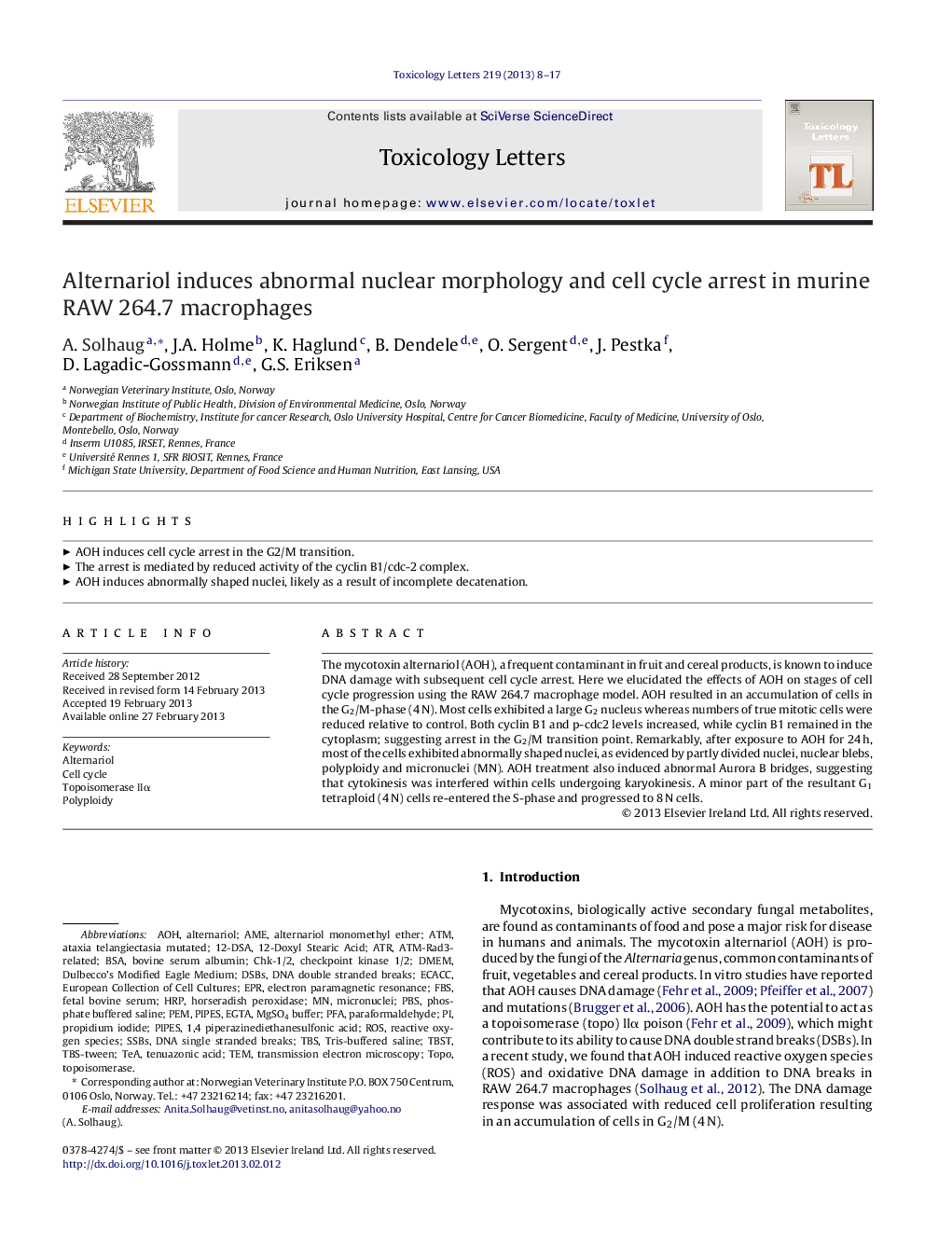| Article ID | Journal | Published Year | Pages | File Type |
|---|---|---|---|---|
| 2599428 | Toxicology Letters | 2013 | 10 Pages |
The mycotoxin alternariol (AOH), a frequent contaminant in fruit and cereal products, is known to induce DNA damage with subsequent cell cycle arrest. Here we elucidated the effects of AOH on stages of cell cycle progression using the RAW 264.7 macrophage model. AOH resulted in an accumulation of cells in the G2/M-phase (4 N). Most cells exhibited a large G2 nucleus whereas numbers of true mitotic cells were reduced relative to control. Both cyclin B1 and p-cdc2 levels increased, while cyclin B1 remained in the cytoplasm; suggesting arrest in the G2/M transition point. Remarkably, after exposure to AOH for 24 h, most of the cells exhibited abnormally shaped nuclei, as evidenced by partly divided nuclei, nuclear blebs, polyploidy and micronuclei (MN). AOH treatment also induced abnormal Aurora B bridges, suggesting that cytokinesis was interfered within cells undergoing karyokinesis. A minor part of the resultant G1 tetraploid (4 N) cells re-entered the S-phase and progressed to 8 N cells.
► AOH induces cell cycle arrest in the G2/M transition. ► The arrest is mediated by reduced activity of the cyclin B1/cdc-2 complex. ► AOH induces abnormally shaped nuclei, likely as a result of incomplete decatenation.
